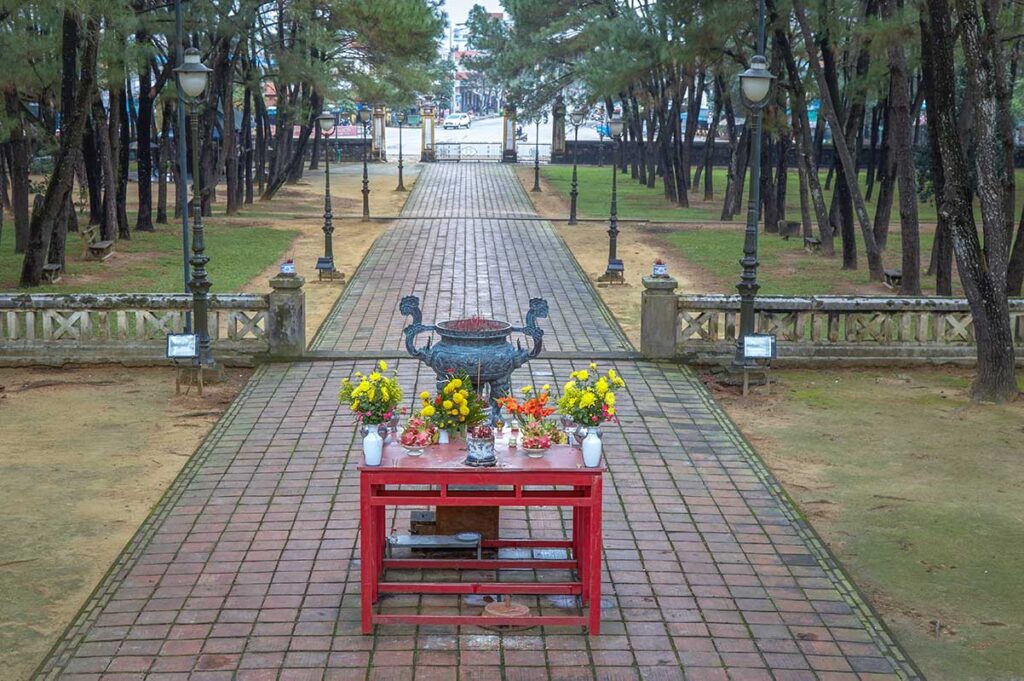History of Nam Giao Esplanade
Nam Giao Esplanade was built in 1806 under Emperor Gia Long, the founder of the Nguyen Dynasty. It was designed as the official site for the Giao Ceremony, a sacred imperial ritual where the emperor would offer sacrifices to Heaven, Earth, and Nature, praying for peace, good harvests, and the well-being of the kingdom. These ceremonies were deeply influenced by Confucian and Taoist traditions, reflecting Vietnam’s ties to Chinese cosmological beliefs.
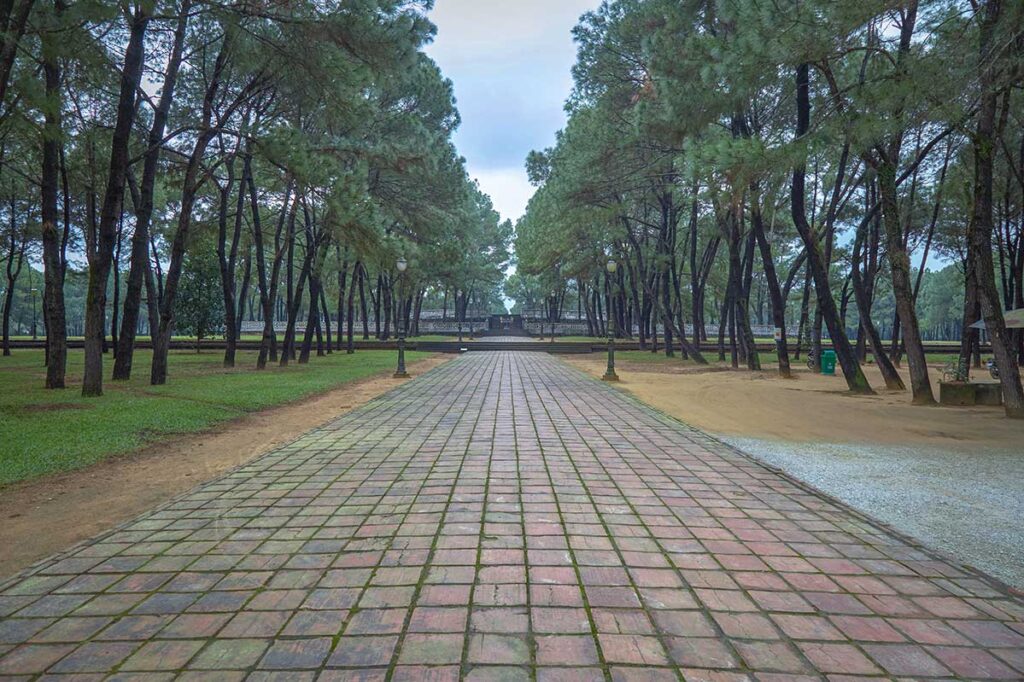
Originally, the ceremonies lasted three full days and involved elaborate preparations and temporary structures. Under Emperor Bao Dai, the last reigning emperor, the ritual was simplified to a single day. The last official ceremony was held in the early 20th century, and since then, the site has remained more symbolic than active.

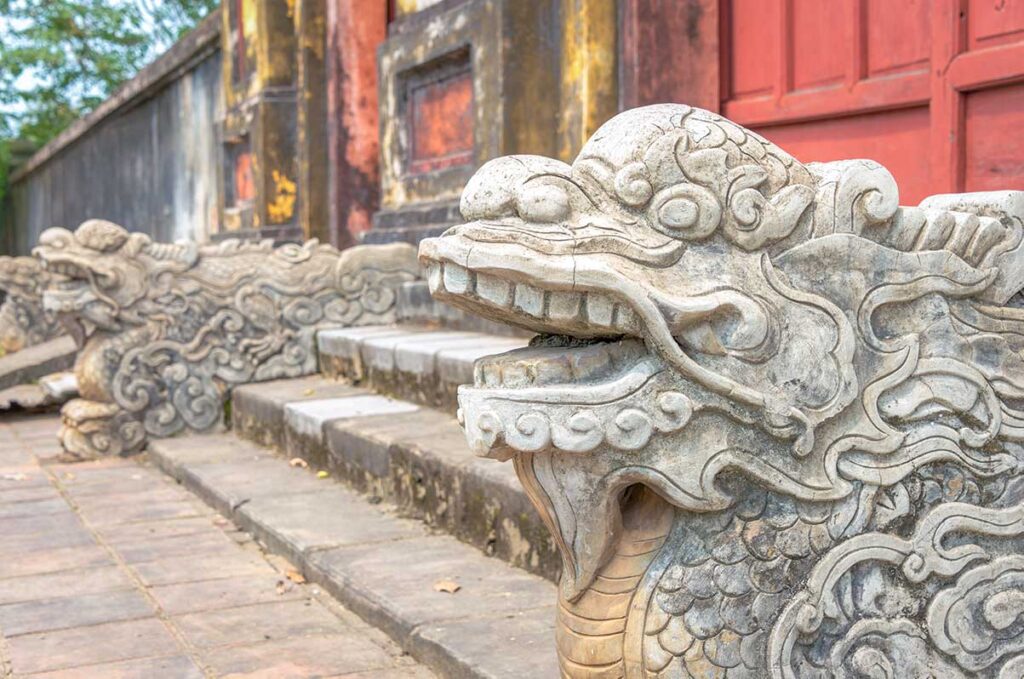
The esplanade once spanned 10 hectares, laid out with four directional gates, stone screens, altars, and ceremonial pavilions. Although many of the surrounding structures have not survived, the main altar remains the most intact imperial altar of its kind in Vietnam. In recognition of its historical and cultural value, Nam Giao is included as part of Hue’s UNESCO World Heritage-listed monument complex.
The site is undergoing restoration, with work expected to finish in 2026. Even during restoration, it remains open to visitors and retains its peaceful atmosphere and historic importance.
Layout and architecture
Nam Giao Esplanade is set in a forested park area just outside Hue, offering a quiet, natural setting very different from the city’s palaces and temples. The space is simple and open, with a strong focus on symbolism over decoration—you won’t find intricate carvings or grand statues here.
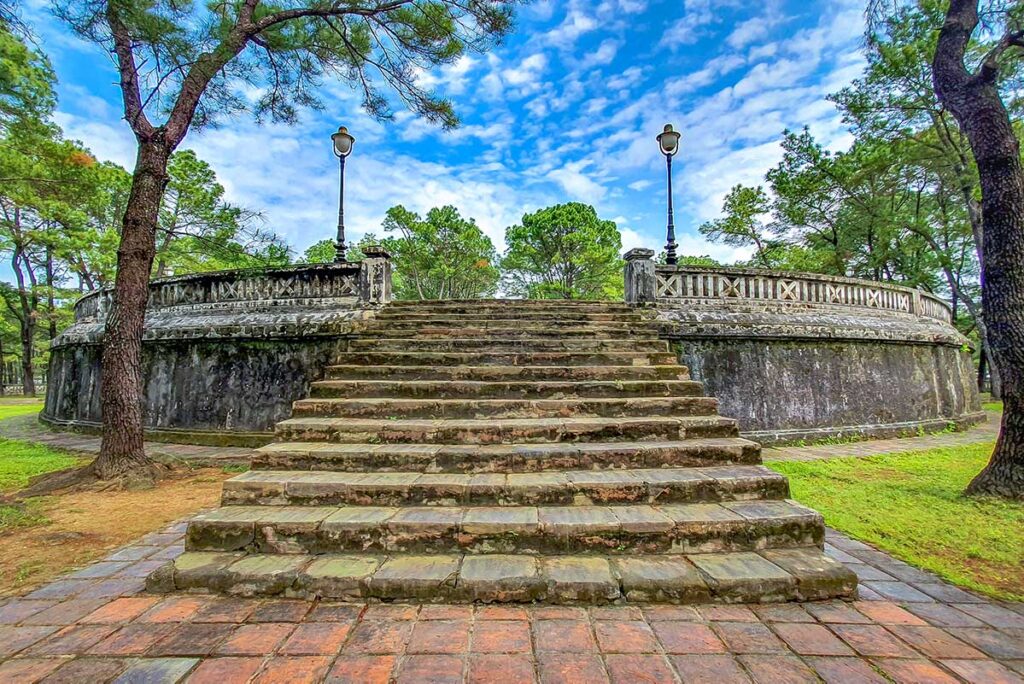
At the center is the three-tiered altar, designed to represent the harmony between Heaven, Earth, and Humanity—a key principle in Eastern philosophy. The altar’s layout reflects this cosmology in both shape and color:
- Top tier (Heaven): circular, 40.5 meters in diameter, painted blue, and 2.8 meters high.
- Middle tier (Earth): square, 83 meters on each side, painted yellow, and 1.1 meters high.
- Bottom tier (Human): square, 165 meters on each side, painted red, and 0.84 meters high.
Each level is built from bricks and tiles, with stepped access on all sides, and is surrounded by pine trees planted by Nguyen emperors to create a sacred, secluded space. Originally, stone screens marked the four entrances—three still remain today.
During imperial times, the grounds also featured temporary ceremonial buildings, such as shrines, storage for offerings, and shelters for officials. These structures were dismantled after each ceremony and are no longer visible, but the large, open site still gives a sense of the scale and solemnity of past rituals.
What to see and do at Nam Giao Esplanade
Nam Giao Esplanade is a quiet place to walk, reflect, and take in a part of Hue’s imperial past that most travelers miss. The wide stone path leading to the altar is peaceful, and the surrounding pine trees make it feel more like a park than a monument.
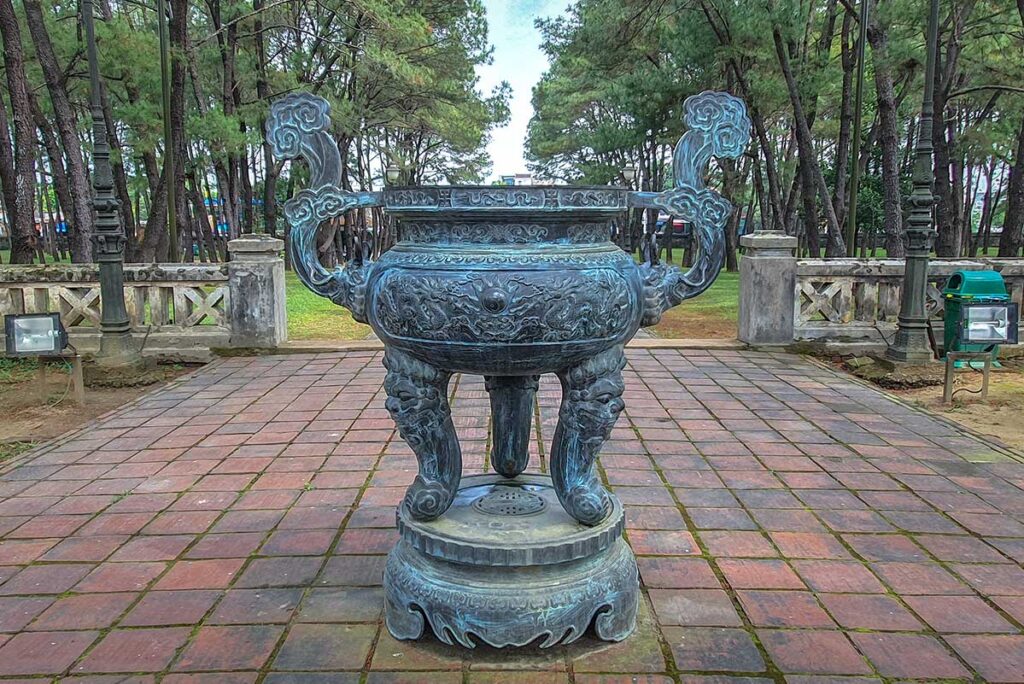
You can view the restored altar platform, walk around the old stone screens, and see the remains of the ceremonial layout. There is some signage on-site, though much of it is in Vietnamese and quite limited—so reading a bit before you go helps.
It’s also a nice place for photos, short strolls, or a break from the busier parts of the city. Most of the time, you’ll find yourself completely alone here, which adds to the atmosphere if you enjoy quiet, uncrowded places.
How to get there
Nam Giao Esplanade is located about 4 km south of Hue city center, in Truong An Ward. It takes around 10–15 minutes by car, taxi, or Grab, and it’s easy to include in a short city loop with stops like Phu Cam Cathedral or nearby cafes.
There’s no public transport, so you’ll need to go by private vehicle, motorbike, or bicycle. The area is quiet and easy to navigate with Google Maps.
Entrance fee and opening hours
- Entrance Fee: 50,000 VND
- Opening Hours: Open during daylight hours
There’s usually no staff on-site, or only a small ticket booth if it’s open. Some visitors feel the price is a bit high for what’s currently visible, especially given the lack of signage and facilities—but it helps support restoration work.
Is it worth visiting?
It depends on what you’re looking for. Nam Giao Esplanade isn’t visually dramatic and doesn’t have much infrastructure—but for those interested in imperial history, rituals, or symbolism, it’s a meaningful and very peaceful spot.
If you’re moving slowly through Hue and want to see something different—away from the tombs and temples—it can be a nice stop. But if your time is limited or you’re expecting something visually impressive, you might want to prioritize other sites. It’s better suited for quiet explorers and history lovers than for first-timers ticking off major sights.
